The Business of Drag is a Queerency interview series exploring the entrepreneurs, innovators, and artists of the drag economy.
Key Takeaways:
- Trust your vision, even when others don’t see it.
- Acquiring your first customer is often hard, but builds momentum that compounds
- Preparation + serendipity can lead to success
Biblegirl is a multi-hyphenate drag performer and merchandising entrepreneur. On social media she’s a unique presence, embodying a specific early-internet MySpace edgelord aesthetic. Her e-commerce website Dragqueenmerch.com is the leading destination to find licensed apparel, collectibles, and fan merchandise of over 400 LGBTQIA+ drag performers, celebrity queens & indie artists, like Juno Birch, Bianca Del Rio, Trixie Mattel, Luxx Noir London, and more.
Queerency spoke with her from her Los Angeles home to chat about how she got started doing drag, what motivated her to branch out into merch, and her uncanny connection to Trixie Mattel.

Let’s start by saying, in your own words, who you are.
Hi, my name is Biblegirl. I’ve been a drag performer and business person for well into a decade now, and I burn the candle from every possible wick, day and night, wearing as many hats as I possibly can with every hand, foot, toe, finger and cookie jar that’s in front of me.
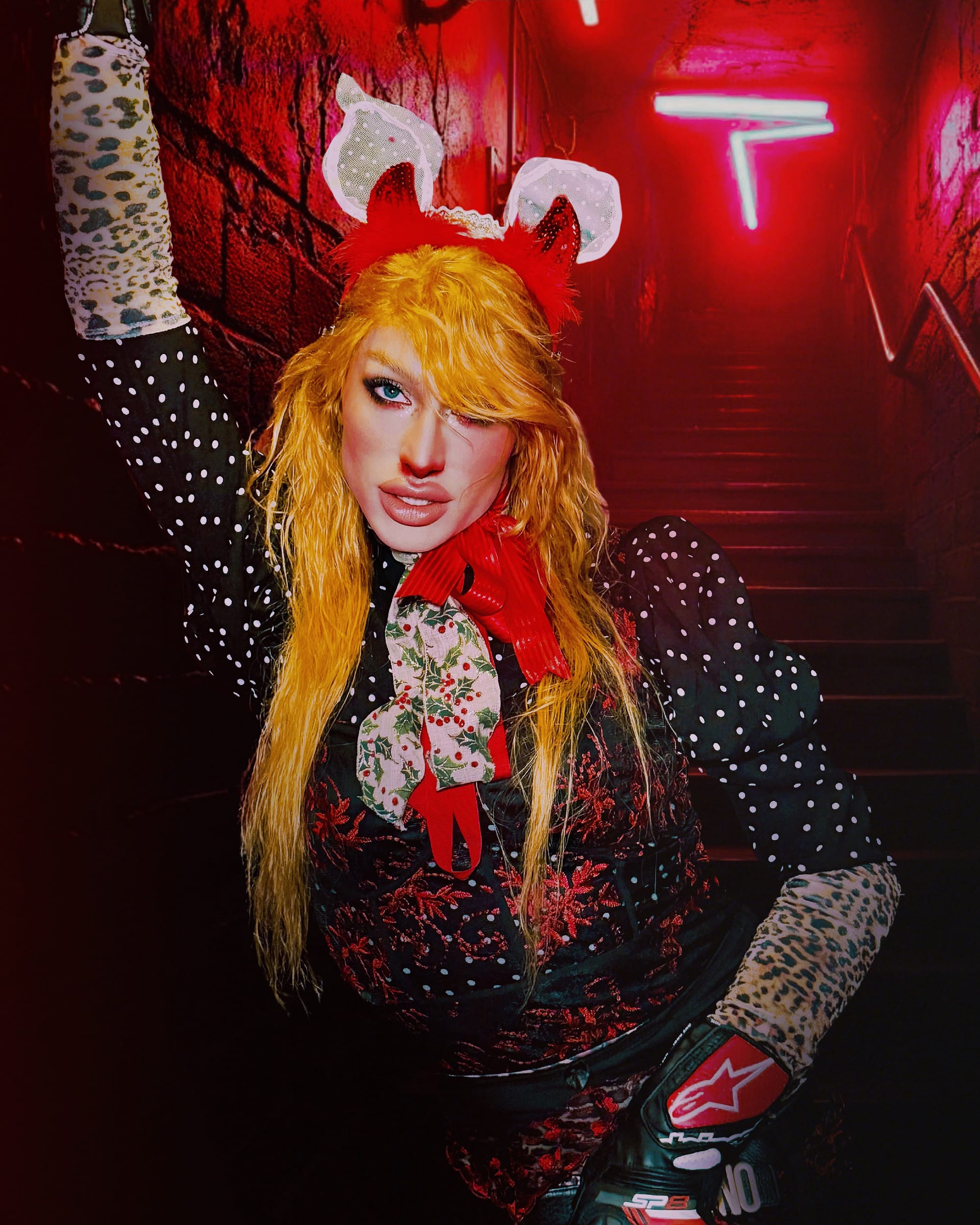
You’re a drag artist, but your impact goes beyond performance. Tell me about that.
I’ve been a drag performer for about ten years, but it’s been eleven years that I’ve been pursuing and actively crafting drag and formulating my persona. Simultaneously, I’m going into my ninth year being a CEO and owner of an e-commerce website called Dragqueenmerch.com [DQM].
I wanted to do design for drag performers…I was told I should reconsider my path and that I was missing the mark for what my visions were.
When you started drag, did you see it as a career path? Were you like, “This is how I’m going to make money,” or did you do it for other reasons?
I was in the middle of my college career. I went to F.I.T. in New York and I had just gotten my associate’s degree for fashion design, women’s wear. I was in the middle of my bachelor’s program and I wanted to pursue a specialization in lingerie and intimate apparel because I was—and I’m still—very pop culture, pop star concert, performance wear-inspired. It was before drag had really hit the pop cultural mainstream and I wanted to do design for drag performers. At the time, a lot of the professors I was studying under didn’t quite understand. I was told I should reconsider my path and that I was missing the mark for what my visions were.
I’ve always been someone who can follow directions but I don’t like being told that what I’m doing is wrong, especially when the ethos of it is authentically inspired. I had a breaking point when I was five weeks into that program in this knitwear class where the loom wasn’t taking yarn and I had this personal come to Jesus moment understanding that this wasn’t working for me anymore. I texted both of my parents saying I probably needed to leave the program. They said, “Okay, let’s figure this out.” I had already been dabbling in drag, and I said this is the career path.
“I’ve known drag performers forever and they’re still trying to make ends meet. How are you going to make that work?”–Grandma Joyce (Biblegirl’s grandmother)
Doing a little rewind for context, my intro to drag was my dad’s mom, the late Grandma Joyce. She had been going to Fire Island’s Cherry Grove for decades and my first face-to-face with drag was a long weekend when I was in seventh grade. I told her my plans and her first question—without undermining what I wanted to do—was: “I’ve known drag performers forever and they’re still trying to make ends meet. How are you going to make that work?”
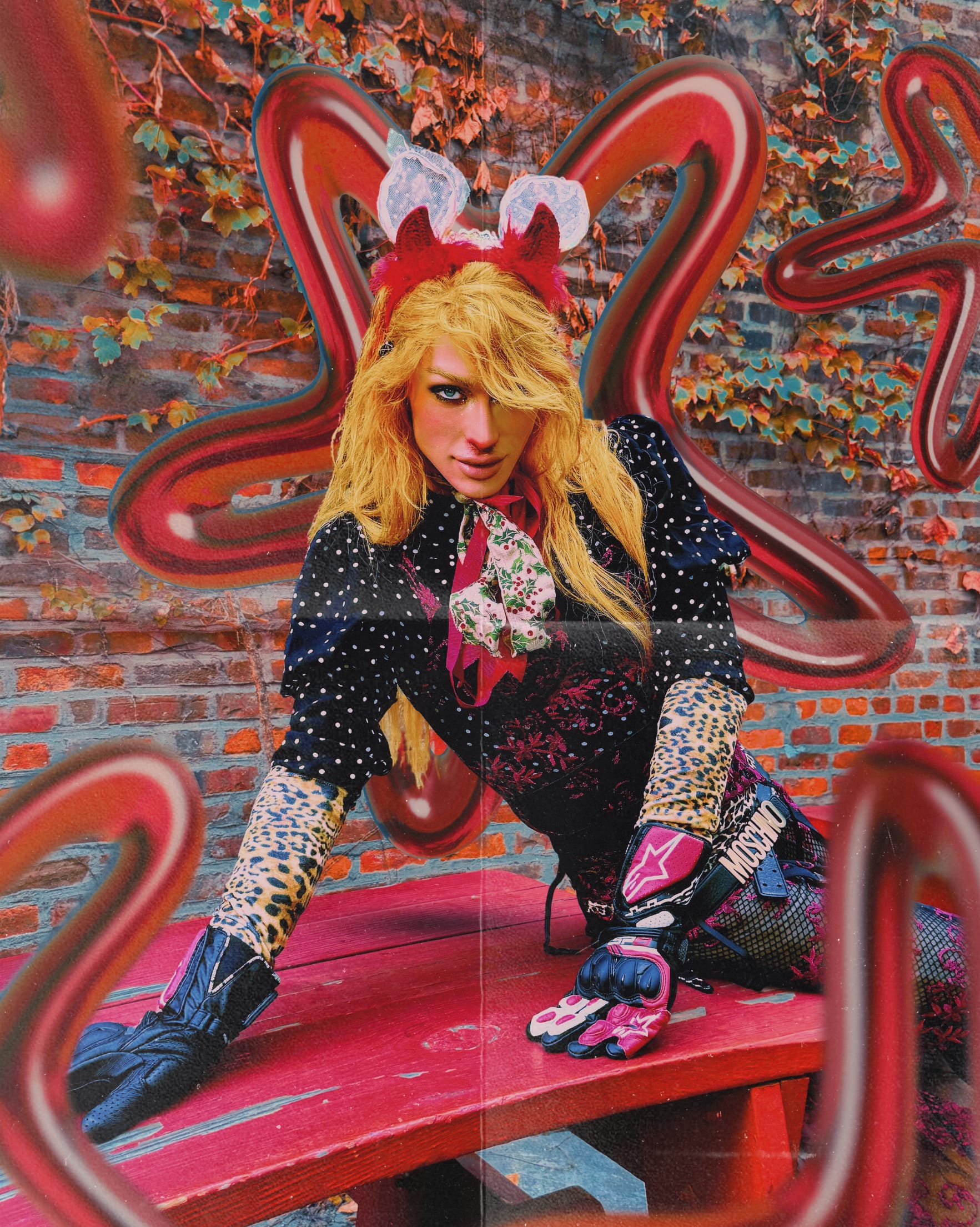
Is this where DragQueenMerch comes in?
I developed the idea of DQM as an avid drag fan. I had been going to the Battle of the Seasons tour and noticed they had a merch table like something you would see at Warped Tour; kind of an indie merch situation. I saw that the mainstream precipice of drag was starting to come into the ether, so I started laying down the groundwork of creating an e-commerce website in tandem with trying to network myself as a locally-based performer.
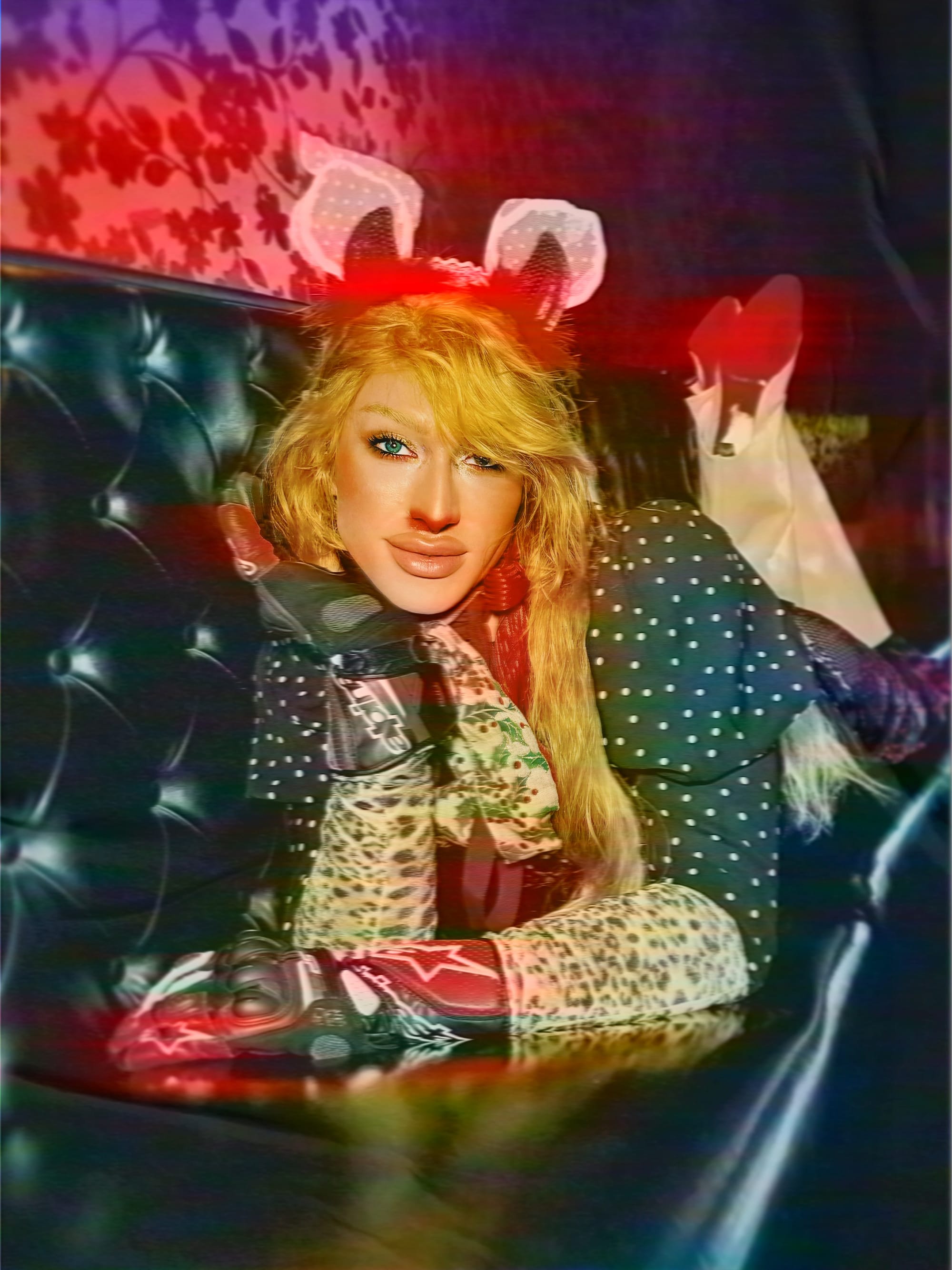
I’m curious about that process. How do you go from someone who wants to perform to someone who’s actually booked?
I was a club promoter in the Meatpacking District and the reason I became a promoter in the first place was because I really didn’t like the fact that it was ultimately the commodification and the objectification of women and treating people like cattle. I wanted to create a bubble and safe space for people who didn’t feel like they had to appeal to the male gaze. After being an established promoter for a long time I started showing up in drag and I was able to bring out people who didn’t necessarily fit nightclub standards and bring a really cool different edge to those places. Through that, I started trying to figure out how to network online with the local drag scene. Through that it just kind of snowballed into getting gigs in Brooklyn.
I saw that the mainstream precipice of drag was starting to come into the ether, so I started laying down the groundwork of creating an e-commerce website in tandem with trying to network myself as a locally-based performer.
What was it like establishing a virtual storefront for DQM?
That was the hardest part–getting that established momentum for client acquisition. It started out as Biblegirl666.com and that was the springboard and litmus test. [At] DragCon LA one year, I had printed what I thought would’ve been enough merchandise for the weekend, [but] by the end of day one I was completely out of my merch.
But it really took until we had our first Ru girl, Trixie [Mattel]. My point of communication with her stemmed from the fact that both our early aesthetics back in 2015 were super similar and we were constantly getting tagged in each other’s posts. Once she was an established client, that’s ultimately what it took for people to see that we meant business.
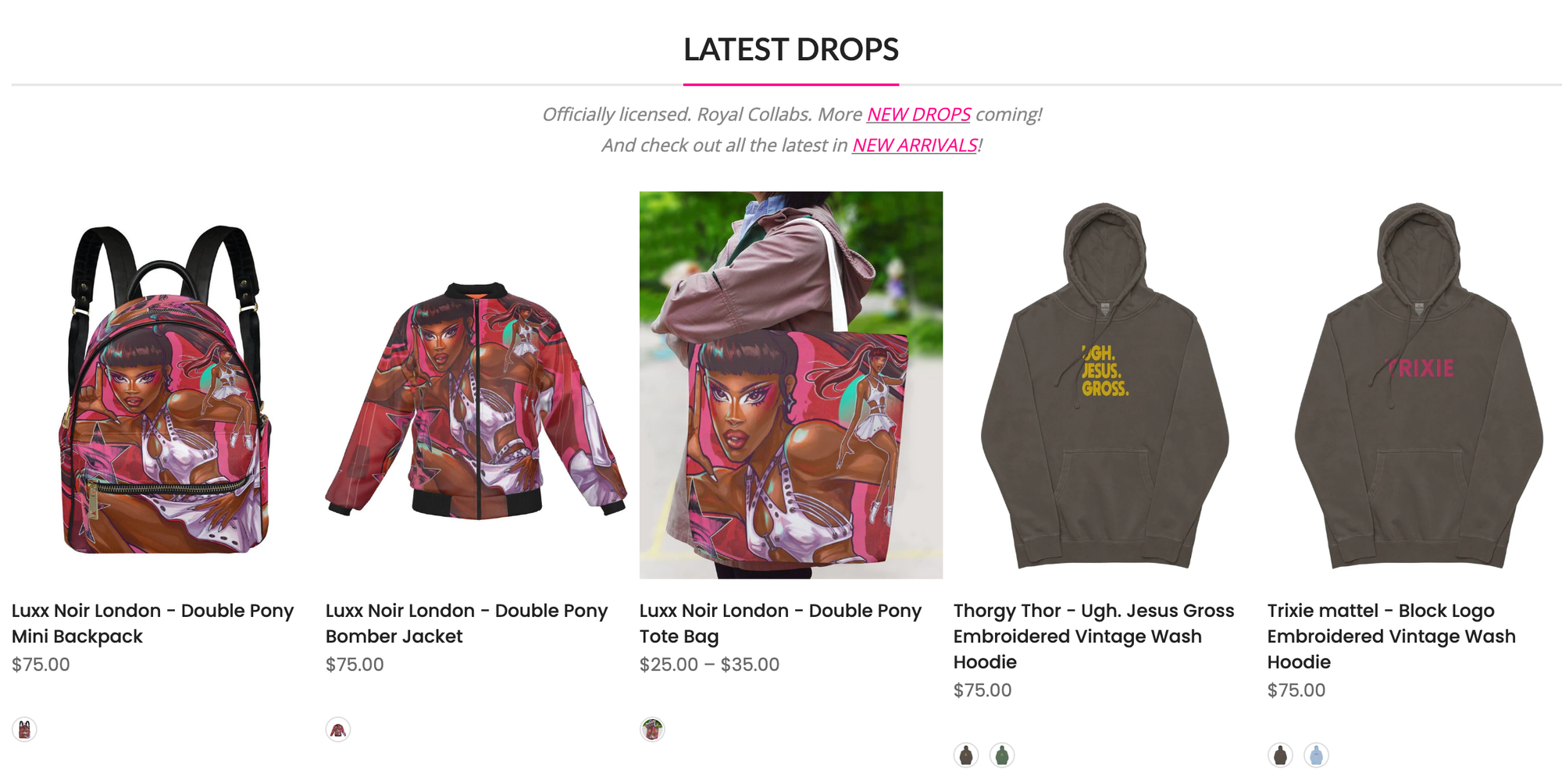
How many employees does DQM have?
We have a team of seven or eight. I say a flexible number because everyone wears so many hats. My best friend Lolo does a lot of our graphic and social work. It’s very first-party, all hands on deck.
Going back to your first DragCon, why do you think you sold out so fast? What do you attribute that success to?
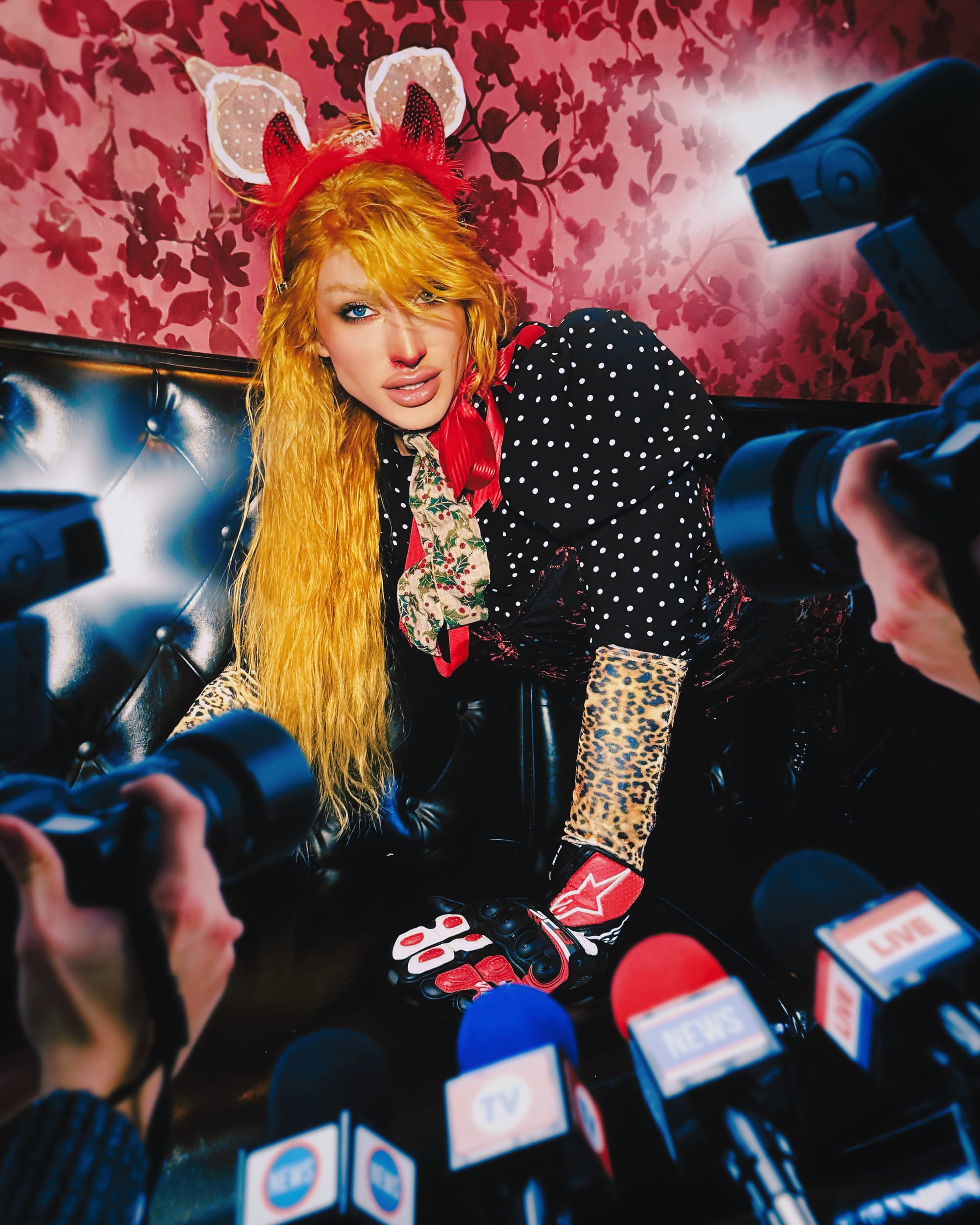
It actually ties back to Trixie in a very uncanny way. I threw a dart in terms of [how much] stock I wanted to bring. I think it was like a hundred pieces, total. Where I got placed in the venue was in a corner, and it was right around the time that season 7 [of RuPaul’s Drag Race] ended; Trixie and Katya were at their initial peak and shared a joint booth. Because of their popularity, their line would wrap around the venue and became a reservoir of people observing me. That resonated with people, the stars aligned properly, and that’s how it all came together.
Biblegirl can be found on Instagram at Biblegirl666 and DragQueenMerch.com.
This article was originally published on May 9, 2024 and was updated on October 28, 2024.




